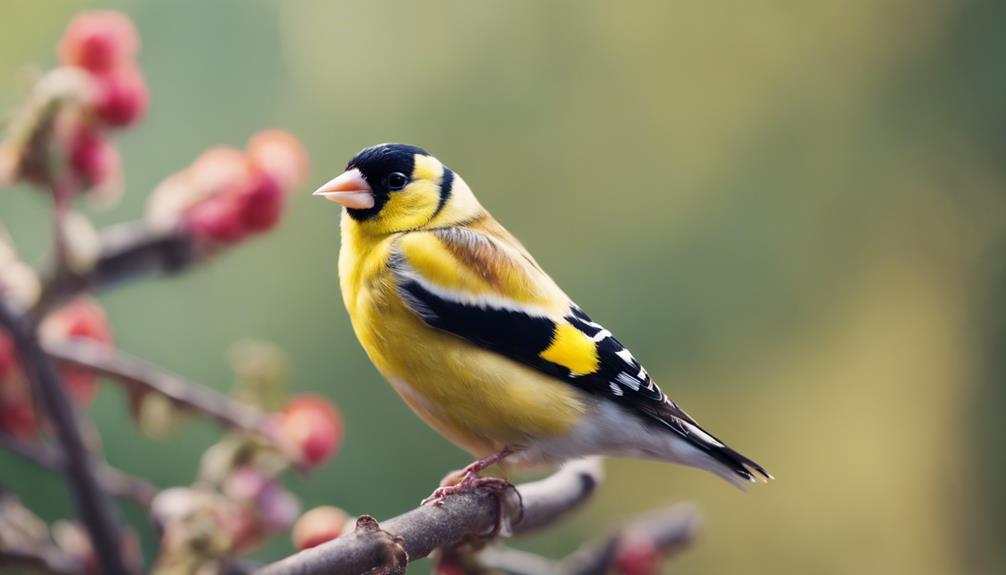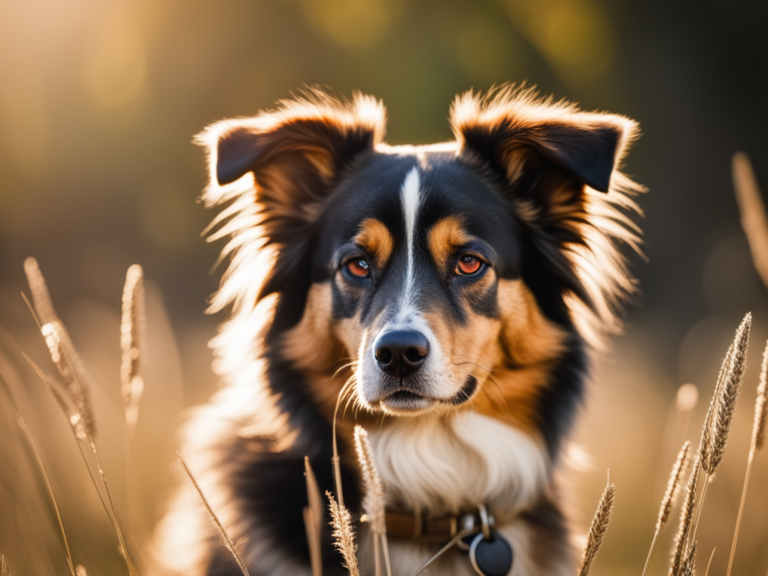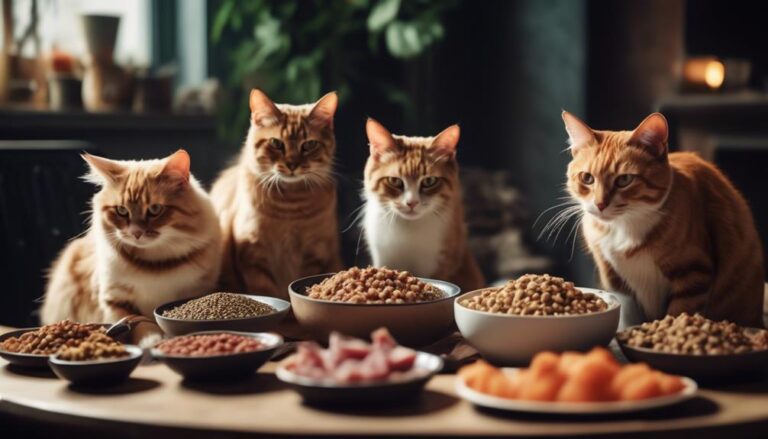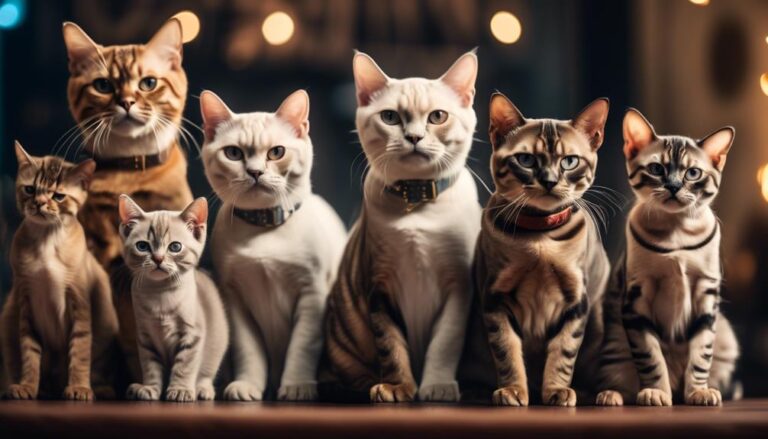Growing Goldfinches: Pet Birds And Their Feather’s Growth

Pet Birds And Their Feather’s Growth: Imagine the exquisite sight of a goldfinch’s feathers, each one a delicate masterpiece of nature’s design. As you observe your pet goldfinch’s plumage, have you ever wondered about the intricacies of their feather growth process? Understanding how these vibrant feathers develop and the factors that influence their health is crucial for every responsible goldfinch owner. Stay tuned to uncover the secrets behind nurturing healthy, vibrant feathers in your beloved pet goldfinch, and discover the key to enhancing their natural beauty.
Hatchling Feathers Development
As hatchling goldfinches grow, their feathers develop in distinct stages, reflecting their journey from fluffy nestlings to colorful adults. Feather development in goldfinches is a complex process that is influenced by various factors such as nutritional needs and environmental influences.
Feather development in goldfinches occurs in specific stages, starting with the growth of down feathers. These down feathers provide insulation and warmth to the hatchlings during their early stages of life. As the goldfinches mature, they start growing contour feathers, which give shape to their wings and body. The final stage involves the development of colorful and vibrant plumage that distinguishes adult goldfinches.
Nutrition plays a crucial role in supporting the feather growth rate of goldfinches. A diet rich in protein, vitamins, and minerals is essential for healthy feather development. Providing a balanced and varied diet ensures that the goldfinches receive the necessary nutrients to support their feather growth and overall health.
Environmental influences also impact feather development in goldfinches. Factors such as temperature, humidity, and lighting can affect the growth and quality of their feathers. Maintaining a comfortable and stress-free environment for the goldfinches is important for promoting healthy feather growth and ensuring they develop into beautiful adult birds.
Molting Process in Goldfinches
Goldfinches undergo a natural molting process as they transition from hatchlings to adult birds, shedding and regrowing feathers to maintain their plumage’s health and vibrancy. The molting process is crucial for goldfinches as it helps them replace damaged or worn-out feathers, ensuring optimal flight and insulation. Understanding the feather regrowth cycle and shedding patterns is essential for goldfinch owners to provide proper care during this period.
Feather regrowth in goldfinches follows a specific cycle. After shedding old feathers, new ones begin to emerge, starting with the larger flight feathers and moving on to the smaller body feathers. This process can take several weeks to complete, during which time the bird may appear more subdued or less active.
Monitoring feather health indicators is vital during molting. Check for any signs of abnormal feather growth, such as misshapen or excessively slow regrowth, which could indicate underlying health issues. Providing a balanced diet rich in nutrients like protein, vitamins, and minerals can support healthy feather regrowth. Additionally, ensuring access to clean water for bathing helps goldfinches maintain their feathers’ cleanliness and integrity.
Factors Affecting Feather Growth
Feather growth in goldfinches can be influenced by various environmental factors and dietary considerations. When it comes to feather growth nutrition, providing a well-balanced diet is crucial. Goldfinches need a diet rich in protein, vitamins, and minerals to support healthy feather development. Protein is especially important as it provides the building blocks for strong and vibrant feathers. Including sources of protein such as insects, seeds, and commercial bird pellets in your gold finch’s diet can promote optimal feather growth.
In addition to a nutritious diet, feather growth supplements can also play a role in supporting healthy feathers. Supplements containing essential nutrients like amino acids, omega-3 fatty acids, and biotin can aid in feather development and overall feather health. These supplements can be particularly beneficial during molting periods when goldfinches require extra support to grow new feathers.
When considering factors that affect feather growth in goldfinches, it’s essential to pay attention to both nutrition and supplementation. By providing a diet rich in essential nutrients and considering the use of feather growth supplements, you can help ensure that your goldfinch maintains healthy and vibrant feathers. Proper care and attention to these factors can contribute to the overall well-being and beauty of your pet goldfinch.
Diet’s Impact on Feather Health
To maintain optimal feather health in your pet goldfinch, it is crucial to understand the impact of its diet on overall well-being and vibrancy. Providing a protein-rich diet is essential for promoting feather shine. Feathers are mainly composed of protein, so ensuring your goldfinch receives adequate protein in its diet is fundamental for healthy feather growth and maintenance. Incorporating sources of high-quality proteins like insects, seeds, and pellets will contribute to the strength and luster of its feathers.
In addition to a protein-rich diet, feeding your goldfinch vitamin-packed meals is key to maintaining vibrant plumage. Vitamins play a crucial role in the health and appearance of feathers. Vitamin A, for example, is essential for feather growth and pigmentation, while Vitamin E supports overall feather health. Including a variety of fresh fruits and vegetables in your Gold finch’s diet can provide the necessary vitamins to support a vibrant plumage.
Seasonal Changes in Plumage
Let’s explore how your goldfinch’s plumage changes with the seasons: from the spring molt process where old feathers are shed and new ones grow into the vibrant colors of summer that attract mates and show off health, to the winter camouflaging plumage that helps them blend in with their surroundings and stay protected.
Spring Molt Process
During the spring season, goldfinches undergo a natural process known as the molt, where they shed old feathers and grow new ones to adapt to changing environmental conditions. This transition period impacts their behavior, with goldfinches becoming more subdued and focused on preening and grooming to maintain feather health. Grooming techniques become vital during the spring molt, as birds work diligently to remove old, worn-out feathers and ensure the healthy growth of new ones. Goldfinches may appear less active during this time as they conserve energy for feather regeneration. Understanding these behavior changes and the significance of grooming practices can help bird owners support their goldfinches through this critical phase of feather growth.
Summer Vibrant Colors
Goldfinches showcase vibrant summer colors as their plumage undergoes seasonal changes, revealing a stunning transformation in their appearance. During this time, their feathers take on colorful hues, radiating a summer glow that captivates onlookers. The vibrant colors are not only aesthetically pleasing but also serve a purpose in the bird’s life cycle. Sunlight plays a crucial role in enhancing these hues, bringing out the brilliance of their plumage. The impact of sunlight on the feathers creates a mesmerizing display of vibrant colors, making goldfinches truly stand out during the summer months. Observing these birds in their full splendor, you can appreciate how nature’s influence shapes their appearance, showcasing the beauty of their vibrant hues.
Winter Camouflaging Plumage
Transforming their appearance for winter survival, goldfinches develop camouflaging plumage that blends seamlessly with the cold, muted landscape. During winter, goldfinches molt their bright summer feathers, replacing them with duller, grayish-brown plumage that helps them blend into the wintry surroundings, providing essential winter camouflage. This change not only aids in camouflaging them from predators but also helps in conserving energy by reducing heat loss. The winter plumage serves as an additional layer of insulation, trapping air close to the bird’s body and helping maintain body heat in chilly temperatures. By adapting their feathers to match the winter environment, goldfinches showcase nature’s remarkable ability to equip them for survival in harsh conditions.
Regrowing Lost Feathers
When a goldfinch loses feathers, the regrowth process typically begins within a few weeks. Feather regrowth is a natural and essential part of a goldfinch’s life cycle. During this period, it is crucial to provide proper feather care to support healthy regrowth and ensure your bird’s well-being. Maintaining a balanced diet rich in nutrients like protein, vitamins, and minerals is key to promoting successful regrowth and overall feather health.
Lost feather recovery can vary in duration depending on the individual bird and the extent of feather loss. However, with patience and proper care, most goldfinches will regrow lost feathers within a few weeks to a few months. Regular grooming and preening habits also play a significant role in feather health and can aid in the regrowth process.
To support your goldfinch during feather regrowth, create a stress-free environment with adequate space for flying and exercise. Avoid handling your bird excessively during this time to minimize any additional stress that could hinder the regrowth process. Providing a varied and nutritious diet, along with access to clean water and natural sunlight, will help ensure optimal feather regrowth and overall health for your feathered friend. Remember, patience and consistent care are key when it comes to helping your goldfinch regrow lost feathers.
Feather Molt Patterns
When it comes to feather molt patterns, goldfinches follow seasonal shedding cycles. Feathers are lost and then regrown during molting periods. Understanding these patterns can help you care for your pet birds’ changing needs.
Seasonal Feather Shedding
As your goldfinch transitions through different seasons, you will notice distinct patterns in the shedding and growth of its feathers. During winter, your goldfinch may appear fluffier as it grows extra down feathers to keep warm. When spring arrives, your goldfinch will undergo a shedding process to get rid of excess down and damaged feathers, preparing for new growth. Feather growth is a vital part of your goldfinch’s seasonal changes, ensuring it stays healthy and well-insulated throughout the year. Pay attention to these natural cycles in your bird’s feather molting patterns, providing the necessary care and nutrition to support optimal feather regrowth and maintenance.
Regrowth After Molt
After your goldfinch completes its shedding process, the regrowth of feathers follows distinct patterns known as feather molt patterns. The feather regrowth process is influenced by factors like feather nutrition, which plays a crucial role in providing the necessary building blocks for new feathers. Molt recovery is essential for your goldfinch to regain its full plumage, ensuring proper insulation and flight capabilities. Feather regrowth speed can vary among individual birds but is generally a gradual process that requires time and energy. By ensuring your goldfinch has access to a balanced diet rich in essential nutrients, you can support healthy feather regrowth and help your pet bird recover from molting efficiently.
Feather Care and Maintenance
Proper feather care and maintenance are essential for the health and well-being of your pet goldfinch. Feather grooming techniques play a vital role in keeping your goldfinch’s feathers in top condition. Regular preening helps to remove dirt, dust, and old feathers, keeping the plumage clean and healthy. Understanding the molting cycle is crucial, as it is a natural process where old feathers are shed to make way for new ones. During molting, provide a balanced diet and ensure your goldfinch has access to fresh water to support healthy feather regrowth.
Feather supplements can also aid in maintaining optimal feather health. These supplements contain essential nutrients like vitamins, minerals, and amino acids that support feather growth and strength. Consult your avian veterinarian for recommendations on suitable supplements for your goldfinch.
In addition to grooming and supplements, outdoor aviary maintenance is essential for your goldfinch’s feather care. Regularly clean the aviary to prevent the buildup of dirt, bacteria, and parasites that can affect your bird’s feathers. Provide opportunities for your goldfinch to bathe, as clean feathers are less prone to damage and infection.
Signs of Healthy Feather Growth
To ensure your pet goldfinch’s feathers are in optimal condition, it is important to recognize the signs of healthy feather growth. Feather health is crucial for your goldfinch’s overall well-being. One key indicator of good feather health is a smooth and glossy appearance. Healthy feathers should have a vibrant color and a sleek texture. If your goldfinch’s feathers appear dull, frayed or have bald patches, it may indicate underlying health issues or poor grooming techniques.
Feather growth is influenced by various environmental factors. Providing your goldfinch with a balanced diet rich in essential nutrients like protein and vitamins is vital for promoting healthy feather development. Additionally, maintaining a clean and stress-free environment can support optimal feather growth. Regular grooming practices, such as bathing and preening, help to keep the feathers clean and aligned properly.
Monitoring your gold finch’s feather condition regularly can help you detect any abnormalities early on. If you notice any signs of unhealthy feather growth, consult with an avian veterinarian for proper diagnosis and treatment. By paying close attention to your pet bird’s feathers and implementing appropriate grooming techniques, you can ensure that your goldfinch maintains healthy plumage and thrives in its environment.
Importance of Sunlight for Feathers
To keep your pet bird’s feathers healthy, make sure they get enough sunlight each day. Sunlight exposure can enhance the vibrancy and color of your bird’s feathers. Providing adequate sun exposure is crucial for promoting healthy feather growth.
Sunlight and Feather Health
Regular exposure to sunlight is crucial for maintaining the health and quality of a goldfinch’s feathers. Sunlight plays a vital role in ensuring proper feather pigmentation and overall feather health. When a goldfinch is exposed to sunlight, its feathers receive essential UV exposure, which is necessary for the production of vitamin D. This vitamin is crucial for the bird’s overall health and helps in preventing feather disorders and maintaining vibrant plumage. Without adequate sunlight, goldfinches may experience feather problems such as dullness or brittleness. Therefore, it is important to provide your pet goldfinch with access to natural sunlight or full-spectrum lighting to support optimal feather health and ensure they remain in prime condition.
Feather Color and Sunlight
Ensuring vibrant feather color in your pet goldfinch relies heavily on essential exposure to sunlight for maintaining optimal pigmentation and overall feather health. Feather pigmentation is directly influenced by UV exposure from sunlight. The ultraviolet rays play a crucial role in enhancing the color intensity of the feathers, giving them their characteristic vibrancy and shine.
Without adequate sunlight, your goldfinch’s feathers may appear dull and lackluster. Sunlight is essential for stimulating the production of pigments in the feathers, which in turn affects their overall coloration. Therefore, make sure your pet bird has access to natural light regularly to help maintain the vivid and beautiful hues of its feathers. Remember, sunlight is key to preserving the stunning appearance of your goldfinch’s plumage.
Sun Exposure for Growth
Maximizing sunlight exposure is crucial for promoting healthy feather growth in your pet goldfinch. Sunlight is essential for the synthesis of feather pigments, enhancing feather pigmentation and making your goldfinch’s plumage vibrant. UV exposure from sunlight plays a key role in activating the production of melanin, carotenoids, and other pigments that contribute to the beautiful colors of your bird’s feathers. Without adequate sunlight, your goldfinch may not develop the rich and varied hues that are characteristic of its species. Ensure that your pet bird has access to natural sunlight or full-spectrum lighting to support the growth of feather pigments. By providing sufficient sunlight, you can help your goldfinch achieve its full feather color potential.
Enhancing Feather Coloration
To enhance the coloration of your pet goldfinch’s feathers, consider incorporating natural food supplements rich in carotenoids into their diet. Color enhancement in goldfinches is closely tied to their diet. Carotenoids, which are natural pigments found in certain fruits and vegetables, play a crucial role in feather pigmentation. By adding foods like carrots, sweet potatoes, and dark leafy greens to your goldfinch’s diet, you can help intensify the vibrancy of their feathers.
Feather pigmentation is a complex process influenced by various factors, with diet being one of the most significant. Carotenoids, in particular, are known to enhance the red, orange, and yellow hues in a goldfinch’s plumage. These pigments are not produced by the bird itself but are acquired through the foods they eat. Thus, ensuring your pet goldfinch has access to a diverse and nutritious diet can contribute to more brilliant feather colors.
Incorporating carotenoid-rich supplements into your goldfinch’s diet can have a noticeable impact on their feather coloration over time. Remember to consult with a veterinarian or avian specialist before making any significant changes to your pet bird’s diet. By providing your goldfinch with the right nutrients, you can help them achieve stunning and vibrant plumage that truly stands out.
Pet Birds And Their Feather’s Growth Frequently Asked Questions
Can Goldfinches Regrow Feathers That Have Been Severely Damaged or Lost?
Yes, goldfinches can regrow feathers that have been severely damaged or lost. Proper feather care and a healthy diet support feather regrowth. Ensure your pet bird has a safe environment to encourage natural feather growth.
How Often Should Goldfinches Have Their Feathers Trimmed or Groomed?
To keep your goldfinch’s feathers healthy, trim them every 6-8 weeks. Regular grooming prevents issues with damaged feathers and encourages regrowth. By maintaining this schedule, you’ll ensure your pet bird’s plumage stays in top condition.
Are There Any Specific Supplements or Treatments That Can Promote Faster Feather Growth in Goldfinches?
To promote faster feather growth in goldfinches, consider natural remedies like a healthy diet rich in vitamins and minerals. Some supplements, if effective, may support feather growth. Consult a vet for advice on specific products for your bird.
Can a Goldfinch’s Feather Coloration Change Over Time, or Is It Permanent?
Feather coloration changes in goldfinches over time due to molting patterns. Environmental factors and diet influence these shifts, sometimes resulting in a brighter or duller plumage. Goldfinches’ stunning colors can evolve as they grow.
Is There a Way to Prevent Feather Plucking Behavior in Pet Goldfinches?
To prevent feather plucking in your pet goldfinches, focus on behavioral training, check for feather mites, provide a balanced diet, and enrich their environment. Creating a comfortable and stimulating space for them can help curb this behavior.
Conclusion
In conclusion, growing goldfinches require proper care and attention to ensure healthy feather growth. By understanding the development process, factors affecting growth, and the importance of diet and sunlight, you can help your pet birds thrive. Regular feather care and maintenance, along with providing a balanced diet and ample sunlight, will contribute to vibrant plumage and overall well-being for your goldfinches. Keep up the good work in nurturing your feathered friends!








